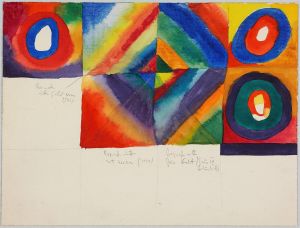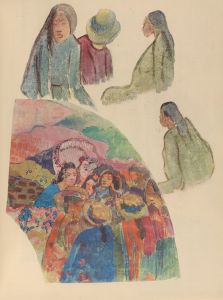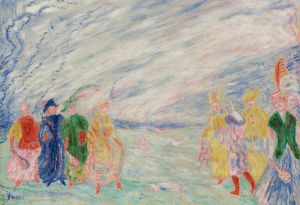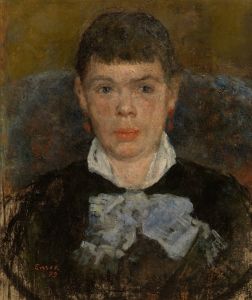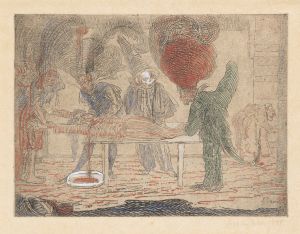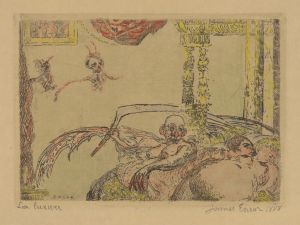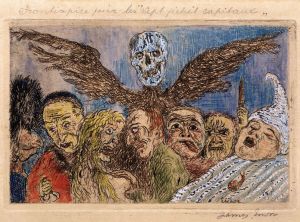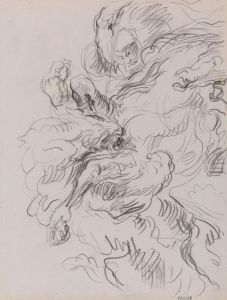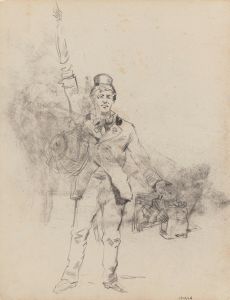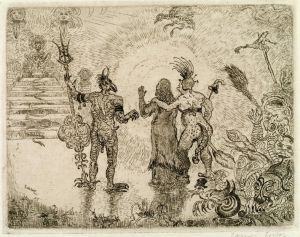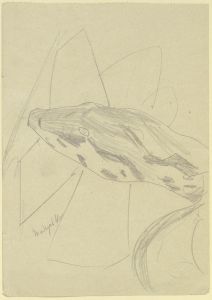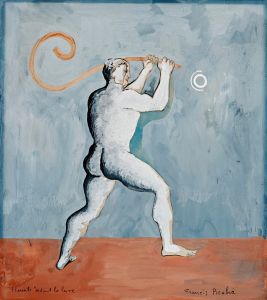
Coquilles Et Statuettes
A hand-painted replica of James Ensor’s masterpiece Coquilles Et Statuettes, meticulously crafted by professional artists to capture the true essence of the original. Each piece is created with museum-quality canvas and rare mineral pigments, carefully painted by experienced artists with delicate brushstrokes and rich, layered colors to perfectly recreate the texture of the original artwork. Unlike machine-printed reproductions, this hand-painted version brings the painting to life, infused with the artist’s emotions and skill in every stroke. Whether for personal collection or home decoration, it instantly elevates the artistic atmosphere of any space.
James Ensor, a prominent Belgian painter and printmaker, is renowned for his unique and often eccentric style that blends elements of symbolism and expressionism. One of his notable works is "Coquilles Et Statuettes" (translated as "Shells and Statuettes"), which exemplifies his fascination with unusual subject matter and his innovative approach to art.
"Coquilles Et Statuettes" was created during a period when Ensor was deeply engaged with themes of fantasy and the grotesque. Ensor's work often features an array of bizarre and fantastical elements, and this painting is no exception. The composition includes a collection of shells and statuettes, arranged in a manner that challenges traditional still life conventions. Ensor's use of vibrant colors and dynamic brushwork brings an energetic and almost surreal quality to the painting.
Ensor was born in 1860 in Ostend, Belgium, and spent much of his life there. The coastal environment of Ostend, with its beaches and marine life, likely influenced his choice of shells as a subject in this painting. The inclusion of statuettes reflects his interest in the human form and the interplay between animate and inanimate objects. Ensor's family owned a curiosity shop, which exposed him to a variety of eclectic objects and undoubtedly inspired his artistic imagination.
The painting is characterized by its vivid palette and the juxtaposition of natural and man-made objects. Ensor's technique involves layering colors to create depth and texture, a method that enhances the visual impact of the shells' intricate patterns and the statuettes' detailed features. This approach is indicative of Ensor's broader artistic style, which often blurs the line between reality and imagination.
Ensor's work was initially met with resistance from the traditional art community, but he eventually gained recognition for his innovative contributions to modern art. His ability to infuse ordinary objects with a sense of mystery and intrigue is evident in "Coquilles Et Statuettes." The painting invites viewers to contemplate the relationship between nature and artifice, a recurring theme in Ensor's oeuvre.
Throughout his career, Ensor was associated with the avant-garde group Les XX, which provided a platform for artists who challenged conventional artistic norms. His involvement with this group underscores his commitment to pushing the boundaries of artistic expression. "Coquilles Et Statuettes" is a testament to Ensor's distinctive vision and his ability to transform everyday subjects into compelling works of art.
Today, James Ensor is celebrated as a pioneer of modern art, and his works are housed in major museums and collections worldwide. "Coquilles Et Statuettes" remains an important piece within Ensor's body of work, reflecting his innovative spirit and his enduring influence on subsequent generations of artists.





